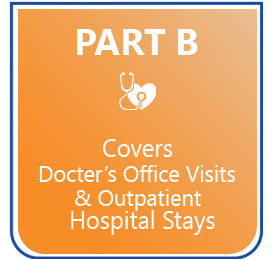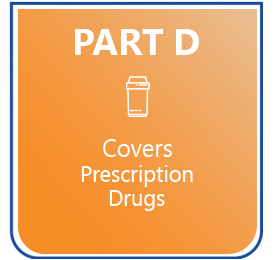Quick Links: Part A Covers – Part A Costs – Part A Enrollment – Part A Eligibility – Part A Premiums
Medicare Supplement Insurance, also known as “Medigap”, fills in gaps in Original Medicare and is offered by private companies.
Traditional Medicare plans cover many healthcare services but not all. They do not cover all costs for covered healthcare services and supplies. A Medicare Supplement Insurance (Medigap) policy can help pay some of the remaining healthcare costs, including:- Copayments
- Coinsurance
- Deductibles
Medicare Part A covers:
- Inpatient hospital care
- Skilled nursing facility care (not custodial or long-term care)
- Home health care services
- Hospice care
- Critical access hospitals
- Acute care hospitals
- Long-term care hospitals
- Inpatient mental health care
- Inpatient rehabilitation facilities
- Participation in clinical research studies
Medicare Part A Costs
In Medicare Part A, most people do not pay a monthly premium for hospital insurance coverage if they or their spouse paid Medicare taxes while working. You will receive premium-free Part A at age 65 if:- You are receiving retirement benefits from Social Security
- You are receiving benefits from the Railroad Retirement Board
- You or your spouse had Medicare-covered government employment
- You have a disability and have received Social Security or Railroad Retirement Board disability benefits for 24 months
- You have end-stage renal disease (ESRD)
- You have amyotrophic lateral sclerosis (ALS)
- $518 if you paid Medicare taxes for less than 30 quarters
- $285 if you paid Medicare taxes for 30–39 quarters
- Days 1–60: $0 per benefit period after the deductible is met
- Days 61–90: $419 per day of each benefit period
- Days 91 and beyond: $838 per each “lifetime reserve day” after day 90 (up to 60 days over your lifetime)
- After lifetime reserve days are used: All costs
Medicare Part A Enrollment
You are automatically enrolled in Medicare Part A if you are receiving Social Security or Railroad Retirement Board benefits when you turn 65. Your Medicare Part A coverage starts on the first day of the month you turn 65. If your birthday is on the first day of the month, your coverage begins the month before you turn 65. The optimal time to enroll in a Medicare plan is during your 6-month Medigap open enrollment period, which starts the month you are both 65 or older and enrolled in Part B. During this period, you have access to better pricing and more policy options.Medicare Part A Eligibility
You are eligible for Medicare Part A if:- You are age 65 or older and a U.S. citizen
- You are a legal resident who has lived in the U.S. for at least five consecutive years
- You are receiving retirement benefits
- You are disabled and receiving disability benefits
- You have end-stage renal disease (ESRD)
- You have amyotrophic lateral sclerosis (ALS)
Medicare Part A Premiums
Most Medicare Part A beneficiaries do not pay a premium if they worked at least ten years and paid Medicare taxes during that time. Individuals who are not eligible for premium-free Medicare Part A can enroll in Part A and pay a premium. Four ways to pay your premium:- Pay online via your Medicare account using a credit or debit card
- Set up automatic payments from your bank savings account
- Use Medicare Easy Pay, a free service that automatically deducts your premium payments from your savings or checking account each month
- Mail a check to Medicare












